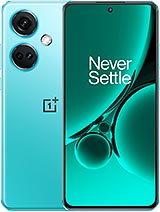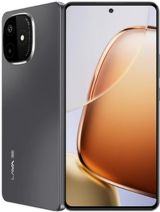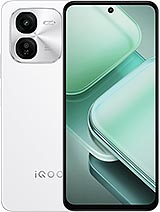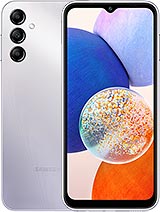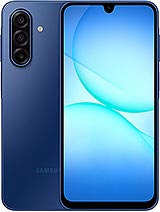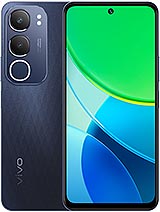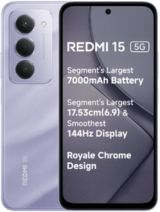Moto G96 alternatives
Tap above to see alternatives.
Redmi 15 alternatives
Tap above to see alternatives.
4x2.40 GHz Cortex-A78
4x1.95 GHz Cortex-A55
2x2.3 GHz Cortex-A78
6x2.0 GHz Cortex-A55
8GB 256GB (UFS 2.2)
8GB 128GB (UFS 2.2)
8GB 256GB (UFS 2.2)
f/1.9, (wide), 1/1.56", 1.0µm, Sony LYT-700C, multi-directional PDAF, OIS
8 MP
f/2.2, 119˚ (ultrawide), 1/4.0", 1.12µm, AF
f/1.75, (wide), 1/2.88" 0.61μm, PDAF
Auxiliary lens
1080p@30/60/120fps, gyro-EIS, OIS
f/2.2, (wide), 1/3.14", 0.7µm
f/2.2, (wide)
1080p@30fps, gyro-EIS
SIM1: Nano, SIM2: Nano
13 5G bands
n1, n3, n5, n7, n8, n20, n26, n28, n38, n40, n41, n77, n78
7 5G bands
n1, n3, n5, n8, n28, n40, n78
In this performance comparison, the Moto G96 with its Qualcomm Snapdragon 7s Gen 2 (4nm) performs better than the Redmi 15 with the Qualcomm Snapdragon 6s Gen 3 (6nm), thanks to superior chipset efficiency.
Redmi 15 offers 2 years of OS updates, whereas Moto G96 provides 1 years. For security updates, Redmi 15 offers 4 years of support compared to Moto G96's 3 years.
Moto G96 features a superior AMOLED display, while Redmi 15 comes with an LCD panel. Both smartphones offer the same 144 Hz refresh rate. Moto G96 also boasts a brighter screen with 1600 nits of peak brightness, enhancing outdoor visibility. Both phones have the same screen resolution.
Redmi 15 features a larger 7000 mAh battery, potentially delivering better battery life. Both devices support the same wired charging speed of 33W. Redmi 15 supports wireless charging at -2W, while Moto G96 lacks this feature.
Moto G96 offers better protection against water and dust with an IP68 rating.
- Redmi 15 – Check price here
¹ Scores can vary even with the same chipset due to RAM, thermals, and software optimization.

